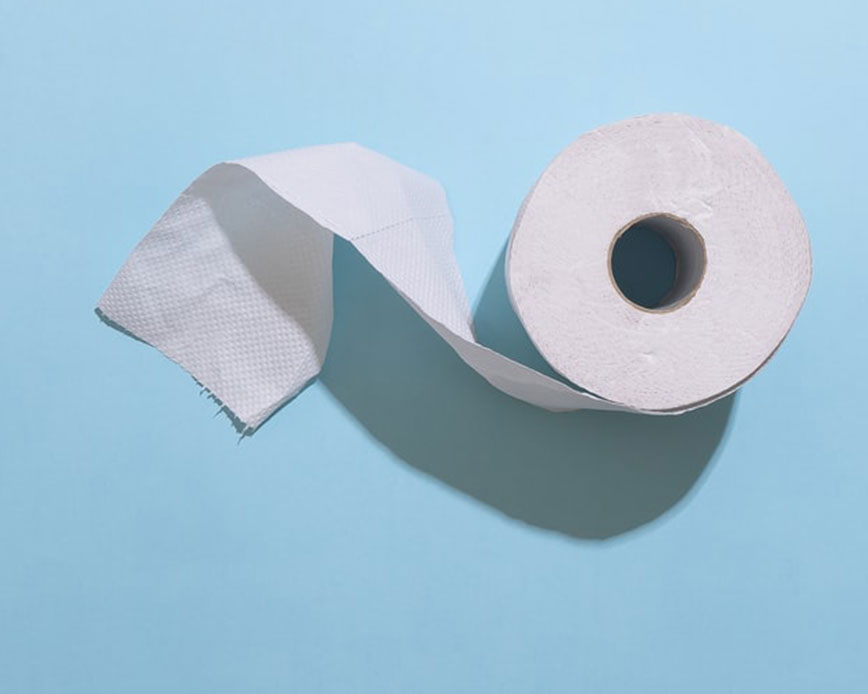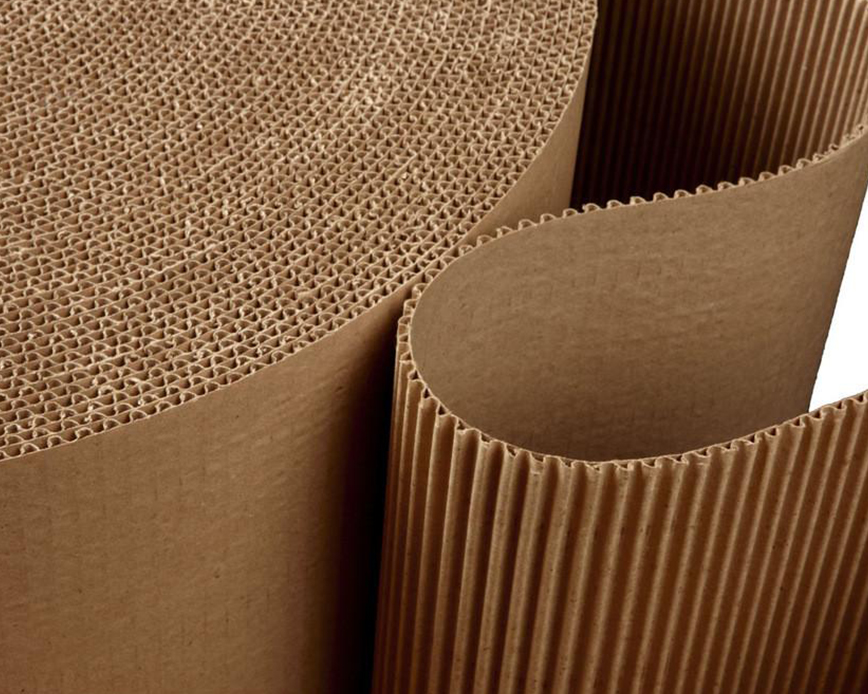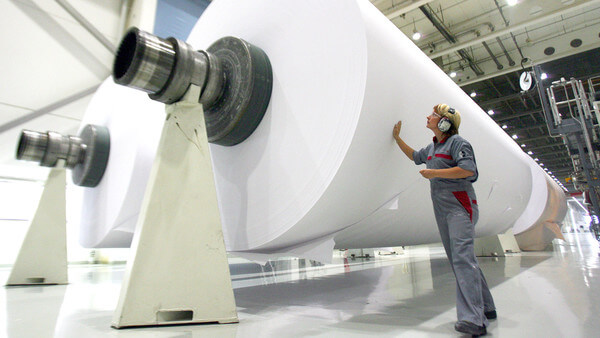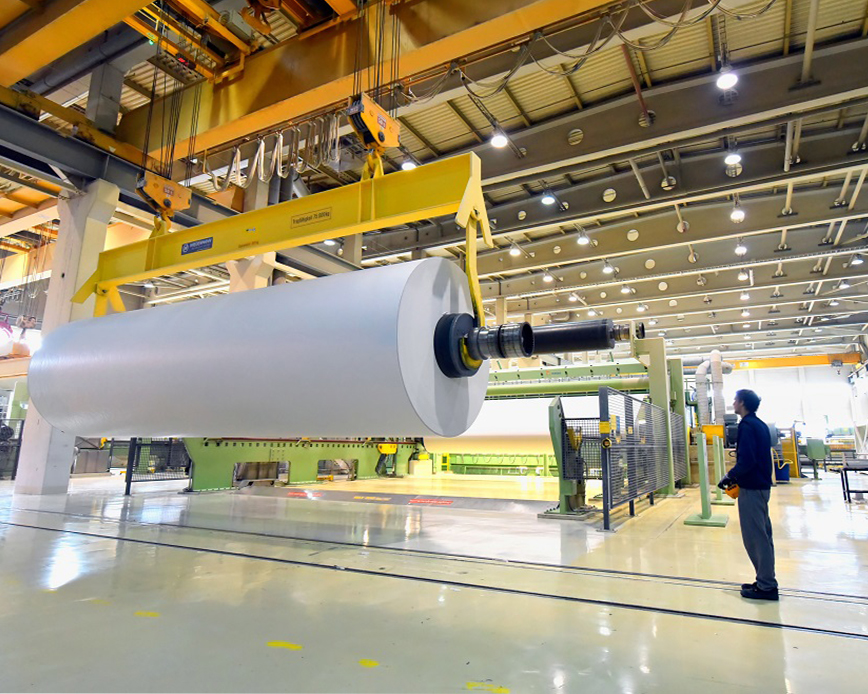“Paper and packaging… how life unfolds.”
The clever slogan from the Paper And Packaging Board certainly has new meaning in the wake of COVID-19. Here’s how a predominantly North American industry is pivoting to meet demand.
Paper, Corrugate & Cardboard Rise to the Occasion
“Most people don’t think about the important role that packaging plays except during a crisis like this. Aside from protecting crucial healthcare supplies and facilitating shipment, the eCommerce we are all totally dependent on now wouldn’t be possible without sturdy, reliable packaging.” That’s according to Bill Drake, a well-respected industry analyst and President of B2B Industry Packaging.
For our company, packaging, and more specifically corrugate cardboard, is one of the main industries we serve. Indeed, the world’s leading corrugators and paper mills trust us with their adhesive application needs. Double-sided splicing tapes, flat-back tabbing tapes and polypropylene tear tapes are all used in the paper manufacturing process to make everything from shipping boxes to food containers to tissues.
“Corrugated cardboard packaging is the backbone of the American supply chain,” says Fibre Box Association President and CEO Dennis Colley. “As COVID-19 changes our daily lives, we want to assure consumers that the box industry is continuing to operate and to deliver needed packaging to our customers who supply grocery stores, pharmacies, doctor’s offices and hospitals with food and medical supplies to keep us all healthy and safe.”
As manufacturers of corrugated cardboard boxes work to keep transport packaging, so are we. Risa Edelstein, VP Marketing, says, “We’re receiving a deluge of communication from our suppliers making sure that we know we are part of essential services, and we are rapidly pivoting to meet those needs. That includes implementing new protocols for our distribution center and warehouse as well as managing an increase in production and delivery. Our reps always said that tape is not important until you do not have it because it could shut an entire mill down!”
However, like other small businesses, ECHOtape has transitioned many of its non-warehouse teams to work from home. “We have a responsibility to meet our customers’ needs, but our first priority was to ensure the safety and health of our employees. That said, we are dedicated to continuing to operate under the guidelines of the U.S. Center for Disease Control and Prevention (CDC), Public Health Agency of Canada, and the Occupational Safety and Health Administration (OSHA) to ensure products continue to flow to market.”
That’s not been an easy task considering ECHOtape’s uniquely Canadian and U.S. business model. “It’s a challenge for most businesses to keeping track of the daily changes affecting business continuity, let alone 50 states and 10 Canadian Provinces, each with different regulations. And yet our team has been able to pivot and redirect itself, not missing a beat. What a testament to ECHOtape’s incredible employees!” says Edelstein.
To Disinfect or Not? Handling Packaging During COVID-19
Obviously, the packages you order on the Internet or local delivery services aren’t exactly sterile. They’ve each likely been touched by multiple people—the person who put your food or item in the package, the person who loaded it onto a truck, the person who hands you your bag or box, and so on. How careful should you be?
Although The CDC’s advice on protecting yourself during COVID-19 does not include disinfecting packages, its general advice stands: Wash your hands frequently and avoid close contact with people. However, erring on the side of caution isn’t wrong. Consider disposing outer packaging outside of your home and wash your hands immediately after handling.
When it comes to food, the same advice stands. Donald W Schaffner is a food microbiologist and professor at Rutgers University. He told CNN: “Right now there’s no evidence that [the virus is] spread through food. There’s no evidence that it’s spread through food packaging. That doesn’t mean that we might not learn new evidence tomorrow that would change our thoughts on that, but right now that’s what we believe,” Schaffner said.
That said, there’s no harm in throwing away nonessential outer packaging (cereal boxes, meat trays) or in wiping down cans and jars with an approved disinfectant if it puts your mind at ease. Alternatively, you could set aside non-perishable groceries for a few days before using them, since the information available now suggests that the virus can’t be detected on plastic or stainless steel surfaces for more than three days.
Aside from washing your hands with soap and water, before beginning any food preparation you should sanitize sinks and counters using one of the approved disinfectants.
What’s Next? Toilet Paper & Demand Shock
Toilet paper has become the poster child of pandemic, and no one is more surprised than the tissue paper industry itself.
Companies that help supply these everyday paper products are rapidly pivoting to meet consumer demand. But when will shelves be restocked? No one seems to know — not the stores, not the suppliers, and certainly consumers.
Here’s why: Most paper mills already operate manufacturing facilities 24 hours, 7 days a week. It’s not like there’s an idle machine that can be cranked up to increase production, let alone while adhering to stricter CDC and Canadian Health guidelines.
The American Forest & Paper Association, an industry group representing paper product makers, noted the industry is working hard to respond to the sudden spike in demand.
“Rest assured, tissue products continue to be produced and shipped — just as they are 52 weeks each year as part of a global market,” AF&PA’s CEO Heidi Brock said in a statement.
Georgia Pacific, the maker of Angel Soft and Quilted Northern, told CNN that toilet paper orders from retailers nearly doubled. The company managed to ship out 20% more than its normal capacity. Meanwhile, Procter & Gamble transitioned production to prioritize their bestselling sizes to maximize the amount of product shipped to retailers. Other suppliers are shifting manufacturing away from similar non-essential products (napkins, for example) to make more room for toilet paper production.
However, there’s another big concern looming: demand shock. Consumers who stockpile toilet paper now could eventually hurt manufacturers’ sales down the road, leaving a surplus of product to strain the system yet again.
It’s a concern we share at ECHOtape. Edelstein says, “Sales for adhesive products in a variety of industries, not just corrugate or paper mills, have increased. An uptick we are grateful for in an economy where small business are quickly shuttering. However, as we pass through the peak of pandemic, and life eventually returns to normal, will orders dry up? We’re creating a contingency plan, but like the rest of the U.S. and Canada, only time will tell. We’re all in this together.”
Read more about ECHOtape’s response to COVID-19 here.




